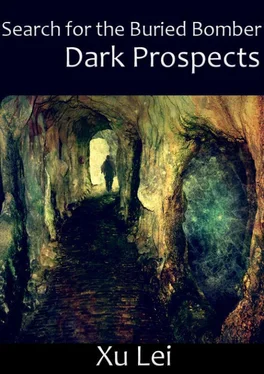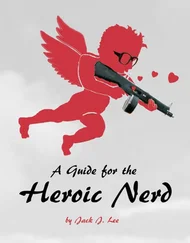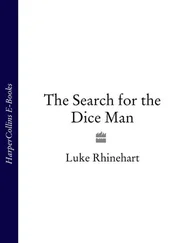I asked Old Tang what he intended to do now.
Corpsmen are different from us prospectors. Corpsmen must be rigorous, testing and verifying everything to ensure their reports are always 100 percent correct. This was the work standard promulgated by Chairman Mao. The engineering corps is forever at the forefront of the military, paving roads through mountains and building bridges across rivers. The least mistake could lead to failure and military disaster. Sure enough, Old Tang told us that they had to make completely certain that the signal was emerging from the abyss. Such a verdict could not be made without verification. That’s why they’d come all the way down to the dam. Now they needed to find a way to the abyss side of the dam to look for the antenna. It was this search that had originally led them down to the warehouse level. The search-and-rescue mission had to continue as well. The situation outside the dam was unknown, so making any too-specific plans would be pointless. The corpsmen would finish the search of the dam while we prospectors stayed behind. Our job was already complete.
It’s been complete for a long time, I thought to myself. There wasn’t going to be some humongous oil lake at the bottom of the void. It was evident the Japanese activity here had little to do with resource prospecting. Our assignment had already been finished before we’d even entered the cave.
No one spoke in opposition to Old Tang. Old Cat said nothing, just silently drank his tea and listened to us. Looking at his expression, he seemed to feel that what we were discussing was ridiculous. At the time I couldn’t have cared less what he thought. Never would I have expected that, soon enough, I would feel the same way.
With reality feeling as surreal as a nightmare, I drifted into sleep and long, vivid dreams. The vast abyss had become a tremendous mouth. I was standing atop the dam, facing into the gale-force winds and watching the abyss expand toward me. All around me the rock walls slowly corroded into the darkness. Then I was sitting in a plane, aimlessly flying through the void. There was nothing around, the flight unending.
Despite my terror, I didn’t wake up. I slept for ten hours straight. At last, when it was time to eat, Wang Sichuan awoke me. Old Tang had already left with some of the others. Old Cat was gone as well. He was leading a group of corpsmen investigating the factory and warehouse. There had to be a heavy-duty freight elevator somewhere nearby. I was sure Old Cat was more than just a simple prospector, otherwise he could never have convinced Rong Aiguo to dispatch the rescue team. My intuition said this affair went far beyond my understanding. I didn’t want to think about any of it anymore.
As I ate, I listened to Pei Qing and Wang Sichuan discussing the dam. They were attempting to infer what the icehouse had been used for. We had only a vague idea of the layout of the average dam, and this one was far from ordinary. The purpose of most of its installations—icehouse included—was a mystery to us. All we knew for sure was that on both sides of the dam were identical caissons, capable of transporting supplies underwater. Beneath the dam’s water level was a huge icehouse filled with countless frozen bombs. Beyond that was a factory and warehouse piled high with supplies.
With his mouth full of mashed vegetables, Wang Sichuan spoke: “The way I see it, we’re already at the lowest level of the dam. If they really were planning on blowing it up, then it wouldn’t make sense to place the bombs anywhere but the very bottom.”
But why did they freeze all the warheads? Such measures were only required for nitroglycerin, but that stuff could never be used in an artillery shell. The heat produced when the chemical was released would cause the inner warhead to explode much quicker than the outer shell, and the danger in transporting the stuff would have been too great. There was one other thing that required lowtemperature preservation: biological weapons.
While it’s a fact that the Japanese conducted biological warfare throughout China, most civilians have only heard of the atrocities of Unit 731—the inhuman Japanese biological research center. Having trekked through China’s forests and explored her caves, we prospectors know Unit 731 was only the tip of the iceberg. In my dozens of years on the job, I’ve come across innumerable cement structures located deep in the forests of the Northeast. All had been built by the Japanese during their invasion of China, and every last one was basically demolished. Nonetheless, evidence of dungeons and dissecting rooms could still be discerned. A comrade in arms told me that, in addition to these research labs, the scale of germ warfare in China was far greater still.
These bombs were probably not biological weapons. What purpose would they have served? The Japanese objective in the area was clear. Why line the base of the dam with weapons like that? I returned to my original question: What had the Japanese planned to do with all those bombs? A thought then occurred to me. What would happen if the refrigeration compressors stopped working? Even though the temperature here was very low, the ice would eventually begin to melt. And then what would become of the warheads?
The icehouse didn’t seem as large as I’d thought. I could hear the sounds of loud movement from that direction. Every now and then soldiers would return. These new recruit tenderfoots were so cold the mucus streamed from their nostrils. They really were just kids. The wait was very dull. We chatted for a bit, but Wang Sichuan couldn’t keep still. Soon he cried out that we should go see what they were up to. We wrapped overcoats tightly around ourselves, then walked back up the stairs, through the pitch-black tunnel, and into the icehouse. We headed toward the sounds. We’d taken no more than twenty steps when I realized something was different. It seemed to have grown colder. Frost had already formed across my eyebrows. That had never happened before. It felt as if we’d been caught in a blizzard in the Greater Khingan range. Before long I could see the shape of someone up ahead. It was Old Tang stamping his feet and smashing something into the ground. They were breaking a hole in the ice.
Several privates were wielding simple tools, sparing no effort as they smashed them down. They didn’t seem to be having much effect. They’d produced only a thin layer of powdery ice. Still, what they were doing was dangerous. There were bombs below.
I walked over to Old Tang. “You’d better be careful,” I told him. “What is the purpose of all this?”
Shivering, his lips purple from the cold, he told me to look at what was underneath the ice. Beneath our feet I saw a large black shadow, but because the top layer had already been smashed rough and uneven, I couldn’t tell what I was looking at. It certainly wasn’t a bomb. This thing was huge. I took a lap around it. The shadow was shaped like a giant paper clip. All along its length were numerous U-shaped protrusions. I gasped. It was a large-scale radio antenna. We knew one of these had to be around here somewhere, but what was it doing frozen beneath the ice?
On closer inspection I realized that the antenna wasn’t the only thing down there. There was a second shadow, also giant, although comparatively dim. It must have been buried in a deeper layer of ice. This shadow was three times as large as the antenna and appeared to be a massive strainerlike disc.
“What the hell is that?” I asked Old Tang, shivering and pointing at the monster paper clip. “Is it the antenna you’re looking for? What’s it doing in the ice?”
“It’s not the antenna,” he replied. “This thing’s got a nickname. It’s called the ‘Würzburg Giant.’”
“What? What giant?”
Читать дальше












